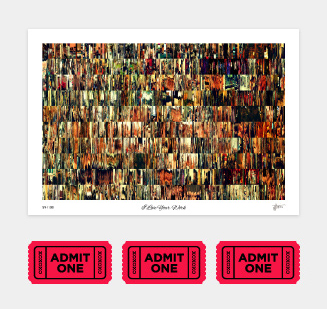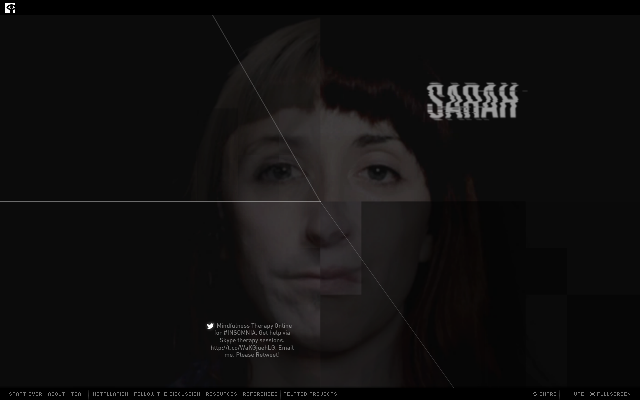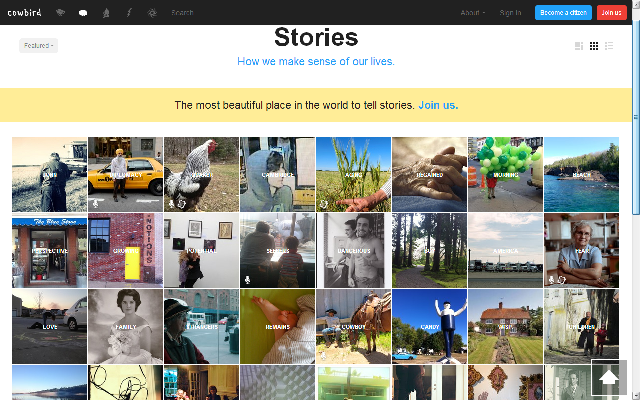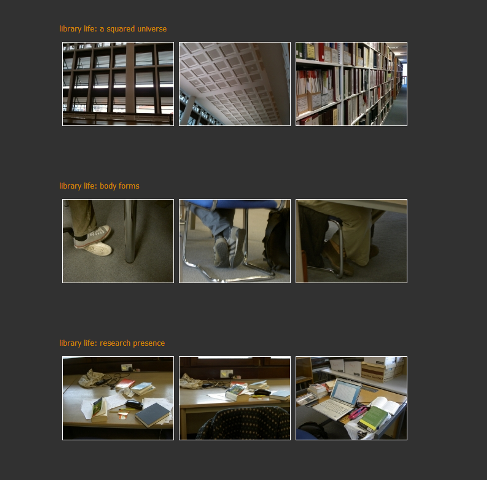Jonathan Harris (We Feel Fine, The Whale Hunt, Cowbird, I Love your Work) will be giving a keynote at WebDox on Monday the 6th of May, in Leuven, Belgium. This is a real treat for us, i-docs lovers, as Jonathan is one of the very few people that have managed to transform “data” into a meaningful universe that feels safe, playful and easy to navigate for the user. His latest project, I Love your Work, was just released last week (go and see it!): it is an amazing portrait of nine women who do lesbian porn. The subject is catchy, and could appear voyeuristic, but the way it is done is subtle and nonjudgmental – to the point that it relies on the serendipity of 10 seconds of video shot every five minutes (during ten days). No authorial choice of crunchy moments. You end up browsing through 2,202 video clips that have all the same relevance, whether they catch a female breast, a private confession or someone making coffee in the morning. Yes there is something about intimacy in I Love your Work, but it has more to do with how you browse the content, and what you choose to see, rather than about Jonathan’s editorial choice.

Some people call Jonathan a wizard of data visualization… I would rather see him as an artist that happens to use digital data instead of colours and brushes. Let’s imagine for a moment that the web is our modern canvas, how can we use it to express something that matters? I suppose that if we formulate the question like this the jump from artist to interactive documentary maker becomes narrower… and this is why Jonathan will be a speaker at a conference about interactive documentaries – rather than art – although he would fit in both.
If we look at Jonathan’s Cowbird, we see that “what matters” to him is “us”. The canvas he uses is a website that invites us all to leave a mark, to paint something, to tell a story or to let go of an emotion. Jonathan has created a playground that has a specific style and feel to it… it is an intimate space… where people can share respectfully, side by side, and glimpse at each other.
It might be strange but Cowbird make me think of a church: one of those places where the architecture demands silence and calm, where people automatically whisper rather than shout, and where – after having browsed around the crypt and the chapels – one feels the urge to find a place, sit down and reflect (or pray, or dream, or contemplate). This is why Jonathan remains the supreme architect – or artist – although it is others that pray: he is the one that has orchestrated a space able to support intimacy.
This brings me to a topic that is dear to me: i-docs as a way to connect with ourselves. It might sound strange to use the Net – and all its networked potential – to come back to the “me”. And yet, is this not what we constantly try to do in our lives? As our days become more and more demanding, as we live in the constant myth of global connectivity, as we count our hours in numbers of mails we have managed to answer… don’t we all feel this constant tension between the ever more connected to the outside, and the ever less connected to the inside?
I always thought that i-docs offered a tremendous opportunity to use interactivity inwards – or at least as a tool to self reflection. While I was doing my PhD, and got more and more isolated in the sterile land of libraries, I used my own website as a way to grab the moment and “look” at what was around me. To document my PhD journey I started doing what I called the “visual Haikus“: a series of three photos with just one line of text (Japanese Haikus normally do the opposite: they have three or four lines of contemplative text – but the aim is the same: to grab the moment and “feel it”).
My visual haikus are not participatory – they only speak about my own experience – but as a format they could have been open to others (actually: this might be a project for me to develop in the future!). What counts here is that the fact of making them made me feel alive, and connected to the present moment, while sharing them made me feel open and less isolated. Moments of intimacy as a way to connect to others and to the real.
Another project that comes to mind is Dreams of your life, by Hide and Seek. Here very little happens: a text appears on a window glass and asks us to reply. This is a dialogue, or a psychological test, or a monologue, or a confession… and it quickly becomes quite personal. As the seasons pass through the glass window that we are contemplating, we are brought to think about our life… about what we do with it… about the traces we will leave the day we disappear… This is not a multi-billion dollars project, it is a small project that came on the side of a full length documentary, but it offers a real space for reflection.
The NFT too has been experimenting with introspection. A journal of Insomnia invites insomniacs to share their moments of sorrow, their night time illuminations with others… in other words: it creates a space for connection that feels safe, but also honest and non-voyeuristic. It uses interactivity in two ways: first it brings you inward by allowing you to reflect on your insomnia, and then it opens up allowing you to share with others. In its second phase, just launched a few days ago, you can also book and receive a telephone call at night, moving out of the reflective mood, and entering into a communication mood.

The use of interactivity as a way to clarify first, and maybe share later, creates a double movement: intimacy (inward) and connectivity (outward). These two movements, as these projects demonstrate, are not antithetical – on the contrary they actually feel quite natural when you experience them – but they go on the opposite direction of the current trend of using interactivity to share first (outward) and maybe never stop to reflect. Effectively interactivity has been sees as a synonymous of “doing”, “choosing”, “acting” – all linked with traceable agency – not with transformation or internal change.
In a moment in time where overload of information is palpable in every corner of our life I wonder if we should not stop and reflect on how we are using the “new canvas” that digital media offers us. If branching narratives (more options), social media (more people) and live data (more information) are the obvious colours to use in our creative i-doc palette, I wonder if there is not a space for different movements and speeds of interactivity. In the quest of meaningfulness one often has to stop and ponder. The act of stopping might be an essential pause in an i-doc too. The “not doing anything yet” might be the moment of connection between the user and the interactive documentary that gives meaning to the whole project. This might be where subjectivity is formed, where the choice-to-come starts making sense for the user, where it becomes personal, and therefore meaningful.
After all, before movement there is always stillness. And awareness needs intimacy, not action. The two might converge later…
Sandra Gaudenzi




